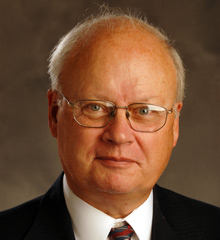Summary of 1 Timothy
Revised by Mary Hinkle Shore, 10/23
SUMMARY
The letter is addressed to TimothyThe companion on Paul’s later journeys for whom two pastoral epistles are named. More in Ephesus, from which the ApostleDerived from a Greek word meaning “one who is sent,” an apostle is a person who embraces and advocates another person’s idea or beliefs. At the beginning of his ministry Jesus called twelve apostles to follow and serve him. Paul became an apostle of Jesus… More PaulThe Apostle Paul, originally known as Saul of Tarsus, was the author of several New Testament letters and the founder of many Christian communities. More has departed for Macedonia. Paul plans to return, but he may be delayed, so he sends instructions to Timothy and expects him to carry them out while he is away. Much of the letter contrasts true and false teachers and prescribes a specific church order. Although the letter is addressed to Timothy, the author sometimes “talks past” him to a larger community that is to hear certain exhortations. For example, all are to honor eldersElders are leaders who exercise wisdom or leadership by virtue of their age and experience. In the New Testament elders, along with the chief priests and scribes, constituted the primary opposition to Jesus when he taught in Jerusalem. More who rule well, preach, and teach; and enslaved individuals are to obey their masters.
SO WHAT?
The First Letter to Timothy is significant for its emphases on the goodness of God, the goodness of the creationCreation, in biblical terms, is the universe as we know or perceive it. Genesis says that in the beginning God created the heavens and the earth. In the book of Revelation (which speaks of end times) the author declares that God created all things and… More, and living in the world rather than fleeing from it. It is strongly anti-gnostic (even if GnosticismGnosis means “knowledge,” although it often refers to secret or mystical knowledge revealed to a specialized few. “Gnosticism” is a generalized term of reference to movements during the second and subsequent centuries that taught, contrary to other Christian teachings, that matter was evil and salvation… More was not fully developed when it was written). Its information on the ordering of the church in its time and place, as well as its teaching on order, have had major importance throughout church history.
WHERE DO I FIND IT?
The First Letter to Timothy is the 15th book in the New Testament. It is clustered with 2 Timothy and Titus. These three together are known as the Pastoral EpistlesThe Pastoral Epistles are the New Testament letters of 1 and 2 Timothy and Titus. They are described as pastoral because they are addressed to individual persons rather than churches; they deal with matters of leadership and church governance. More. They are arranged from the longest to the shortest, as other New Testament letters are. First Timothy stands near the end of what is known as the Pauline corpusThe Pauline corpus is the body of New Testament letters known to have been written by the apostle Paul. The seven epistles generally accepted as being by Paul are 1 Thessalonians, Philippians, Philemon, Galatians, 1 and 2 Corinthians, and Romans. The authorship of the remaining… More, the collection of letters attributed to the Apostle Paul. All told, the Pauline corpus contains the books of Romans through Philemon.
WHO WROTE IT?
According to the first three verses of the letter, it was written by the Apostle Paul, apparently located in Macedonia, to Timothy in Ephesus. However, this letter is generally regarded as pseudonymous, that is, by someone following the teachings of Paul and writing in his name after his death.
WHEN WAS IT WRITTEN?
The First Letter to Timothy is widely considered to be pseudonymous, written after the death of the Apostle Paul. Paul likely died during the reign of the emperor Nero, somewhere between 62 and 65 CE. Since the letter has terminology that is found generally in certain Christian writings of the second century, it is considered to have been written late in the first century or even early in the second.
WHAT’S IT ABOUT?
The First Letter to Timothy is primarily about leadership in the early church: it exhorts its readers to resist false teaching, hold on to the faith as delivered, exhibit good conduct, and order the church in such a way that all of this can be accomplished.
HOW DO I READ IT?
Read the letter as one written to impersonate Paul in a situation that the author faced in his own time and place. Seeking to represent Paul to give authority to what he has to say, the author calls upon his readers to respect “the faith” that has been transmitted to them and to reject false alternatives that claim to convey a higher knowledge than that which has been received. In order to do this letter justice, one should read it (as well as the other Pastoral Epistles) in light of the seven undisputed letters of Paul, where one finds quite different emphases and teachings. As a canonical text, it has importance, but it does not necessarily express the last word on matters (such as teachings concerning the role of women) that are treated differently in other parts of Scripture.

